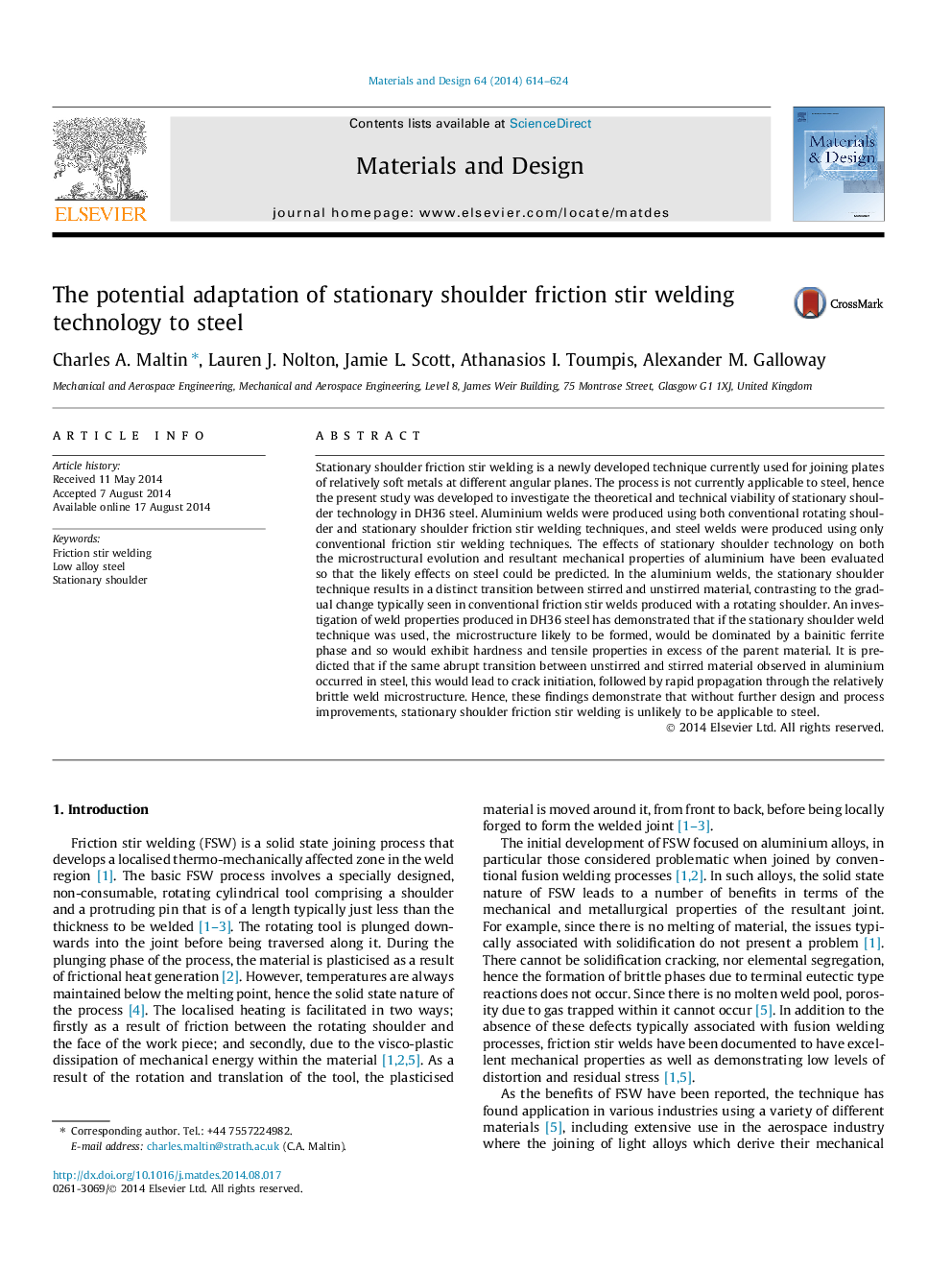| کد مقاله | کد نشریه | سال انتشار | مقاله انگلیسی | نسخه تمام متن |
|---|---|---|---|---|
| 828948 | 1470333 | 2014 | 11 صفحه PDF | دانلود رایگان |
• The potential transfer of stationary shoulder FSW to steel has been investigated.
• Al SSFSW has shown a distinct boundary between stirred and unstirred material.
• DH36 butt welds have shown increases in strength but reduction in toughness.
• If this abrupt transition occurred in steel, it could cause crack initiation.
Stationary shoulder friction stir welding is a newly developed technique currently used for joining plates of relatively soft metals at different angular planes. The process is not currently applicable to steel, hence the present study was developed to investigate the theoretical and technical viability of stationary shoulder technology in DH36 steel. Aluminium welds were produced using both conventional rotating shoulder and stationary shoulder friction stir welding techniques, and steel welds were produced using only conventional friction stir welding techniques. The effects of stationary shoulder technology on both the microstructural evolution and resultant mechanical properties of aluminium have been evaluated so that the likely effects on steel could be predicted. In the aluminium welds, the stationary shoulder technique results in a distinct transition between stirred and unstirred material, contrasting to the gradual change typically seen in conventional friction stir welds produced with a rotating shoulder. An investigation of weld properties produced in DH36 steel has demonstrated that if the stationary shoulder weld technique was used, the microstructure likely to be formed, would be dominated by a bainitic ferrite phase and so would exhibit hardness and tensile properties in excess of the parent material. It is predicted that if the same abrupt transition between unstirred and stirred material observed in aluminium occurred in steel, this would lead to crack initiation, followed by rapid propagation through the relatively brittle weld microstructure. Hence, these findings demonstrate that without further design and process improvements, stationary shoulder friction stir welding is unlikely to be applicable to steel.
Journal: Materials & Design - Volume 64, December 2014, Pages 614–624
